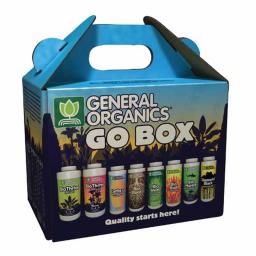 At Fifth Season Gardening, we are frequently asked about what fertilizer to feed houseplants. Unfortunately, to cultivate the happiest, healthiest plants there is no one-size-fits-all-solution. Different types of plants have distinct needs — even plants of the same species can have contrasting nutrient requirements at different stages of their life cycle.
At Fifth Season Gardening, we are frequently asked about what fertilizer to feed houseplants. Unfortunately, to cultivate the happiest, healthiest plants there is no one-size-fits-all-solution. Different types of plants have distinct needs — even plants of the same species can have contrasting nutrient requirements at different stages of their life cycle.
In order to help determine what a plant’s specific needs are, it helps to first ask yourself a few preliminary questions:
- Is the plant being grown for its foliage?
- Is it in a vegetative state of its life cycle, but will bloom later?
- Is the plant blooming? Are you trying to induce blooming?
- Is it showing any deficiencies or looking stressed?
- Is it an orchid, african violet, carnivorous plant, or another plant with special needs?
Your answer to the first three questions should help to group the plant’s nutritional requirements into one of two categories: vegetative or blooming. If your answer to either of the last two questions is yes, please visit Fifth Season and ask us for advice.
If a plant is grown for its foliage or is in a vegetative state of its lifecycle, the nutrients should contain more nitrogen and potassium and a lower ratio of phosphorus. Humboldt Nutrient’s Verde and Deuce Deuce are a good example of products that work wonderfully for growing foliage. They focus on one nutrient each, Nitrogen and Potassium respectively, to gear the plant for generative growth. They come at a premium cost and are not organic, but go a long way in boosting foliage. For a more organic approach, try Primordial Solution’s Sea Green. It requires very small dosages and comes in small bottles, and also works well when blended with the General Organics’ Bio Thrive Grow. For people who want a solid nutrient with a relatively low price tag, the Dyna-Gro Grow is a great option. It contains a higher amount of phosphorous than most vegetative-geared nutrients and is definitely synthetic, but is a favorite among many plant enthusiasts.
If a plant is grown for its flowers and is in its blooming phase, it needs a higher phosphorous and potassium ratio and little nitrogen. The Dyna-Gro line of nutrients is one of the top choices for orchid aficionados, and their products are a good lower-cost option for most blooming specimens. Since the Grow formula mentioned previously is higher in Phosphorous, it can actually work somewhat well for blooming as well, but the Bloom mix works much better. Another good product to try is Primordial Solutions’ True Blooms. It works so well, people give it as gifts! True Blooms works even better when used in conjunction with General Organics’ Bio Thrive Bloom. The GO Box contains small bottles of all General Organics nutrients, which can be easily mixed for most plant needs. Combining the General Organics and Primordial Solutions nutrients yield possibilities for any stage of a plant’s life and brings out the mad scientist in all of us.
 One last note about nutrients: A small amount can be good, but that doesn’t mean a large amount will definitely be better. This is one of the biggest mistakes made when fertilizing any plant, and considering the finite amount of soil available to a houseplant, it can be a particularly damaging one. If you deviate from the recommended doses, you pretty much always want to go in the direction of using less than the listed amount, not more. Typically, when using an unfamiliar nutrient on houseplants, it is advisable to start by using half the recommended dose.
One last note about nutrients: A small amount can be good, but that doesn’t mean a large amount will definitely be better. This is one of the biggest mistakes made when fertilizing any plant, and considering the finite amount of soil available to a houseplant, it can be a particularly damaging one. If you deviate from the recommended doses, you pretty much always want to go in the direction of using less than the listed amount, not more. Typically, when using an unfamiliar nutrient on houseplants, it is advisable to start by using half the recommended dose.
View the previous articles in this series:

Leave a Reply